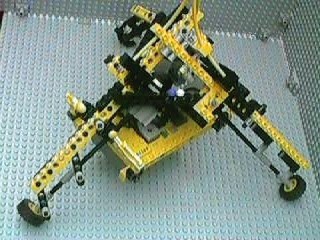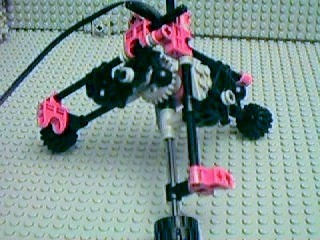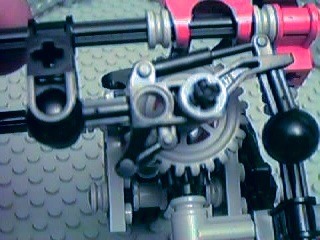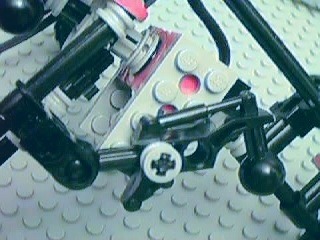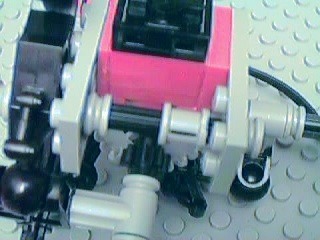RILYBOT 3
Before creating a bigger three-wheeled model based on linear wheels 1 I wanted to make something smaller just for fun. The week after I created RILYBOT 2, I made a half-scale version:
|
This model is not as symmetrical as RILYBOT 2, mainly due to the difficulty of fitting three motors into such a small space.
This model uses #12 cross axles as its three main legs. The cross axles are connected to each other at mutually orthogonal angles using Throwbot "hip/ankle" ball-joint connectors:
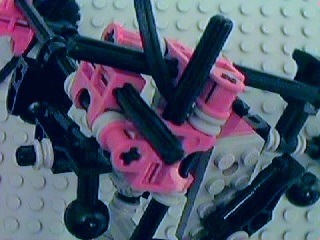
Connecting three axles at mutually orthogonal angles
(There are also three #4 cross-axles on the top that are just for decoration and to make it look a little more like RILYBOT 2. The other black thing sticking out the top is a wire.)
There wasn't enough room to fit three micromotors, so I used just one. The micromotor is supported this way:
|
Using the Throwbot leg pieces made it very easy to support the micromotor and align it precisely the way I needed it to be.
The micromotor drives two of the robot's axles like this:
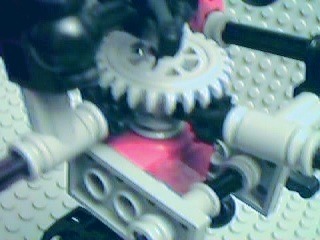
Micromotor, crown gear and two axles.
1 : Linear wheels:
Normal wheels need to pretty much be oriented in the same direction (i.e. mounted on parallel axes) to work efficiently. A linear wheel is a wheel that can be combined with any number of other wheels oriented in different directions. The primary difference is that a normal wheel cannot "roll sideways" while a linear wheel can. Typically linear wheels are powered along one axis and roll freely on the other axis; in order to get full control of movement in a vehicle you use at least two sets of linear wheels, oriented in different directions.
Leo Dorst's Killough platform design is no longer available online, but is essentially the same as this one by Markus Matern or this one by someone named Doug.
Markus also made a smaller Killough platform, that has a bumpy ride.
Here is one on YouTube: aeh5040's Killough platform and photos of the same design on brickshelf: aeh5040's Killough platform
Finally, here is Phillippe Hurbain's RAMA, another fairly compact design.
LEGO® creations index
The graph paper in my newer photos is ruled at a specing of 1 LSS, which is about 7.99 mm.
This site is not affiliated with the LEGO® group of companies.
LEGO®, Duplo®, QUATRO®, DACTA®, MINDSTORMS®, Constructopedia®, Robotics Invention System® and Lego Technic®, etc. are trademarks or registered trademarks of LEGO Group. LEGO Group does not sponsor, authorize or endorse this site.
All other trademarks, service marks, and copyrights are property of their respective owners.
If you want to visit the official LEGO® site, click here
Parts images are from LUGNET. On this page they explicitly give permission to link to the images:
Note: you may link (as in, Yes, it's OK) directly to these parts
images from an off-site web page.
This page was written in the "embarrassingly readable" markup language RHTF, and was last updated on 2013 Jan 01.
 s.27
s.27